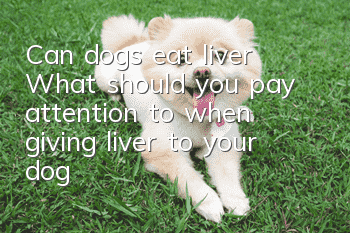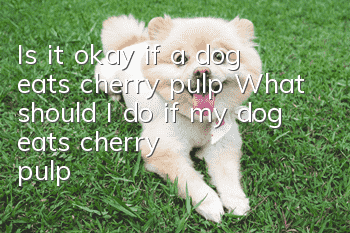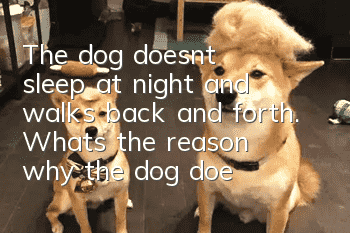Detailed FCI standards and pictures of Teddy dogs

Teddy dog FCI number: 172D
FCI Group: Group 9: Companion Dogs and Toy Dogs Group
Height: The shoulder height of both male and female Toy Poodles is 9.5-11.0 inches (24.0-28.0 cm)
Weight range: None
Head (head, face, eyes, ears, nose, mouth, muzzle, jaw, teeth)
Head: Prominent, straight, and in proportion to the body. The length must be slightly greater than 2/5 of the horse's height at the withers. Not too heavy or bulky, but not too delicate either. There needs to be sharp edges under the skin. Skull: distinctly shaped; width less than half the head length (the central axis forms an axial plane angle of approximately 16 to 18 degrees). Viewed from above, the entire skull is oval-shaped longitudinally, with a slightly convex outline. The vertical axis diverges slightly. The eyes are arched above; moderately pronounced and covered with long hair. There are wrinkles on the forehead, very wide between the eyes, narrowing towards the occipital bone, very obvious (the mini type will be less obvious). Stop: As in medium-sized dogs, barely noticeable. Nose: Prominent and well developed, with vertical occipital bone; nostrils well flared. The nose color of black, white and gray poodles is black; the color of the nose of tan poodles is brown; the color of the nose of apricot poodles is brown throughout the dark brown range, and may also be black. There is no best color, all can be Accept it, but avoid possible fading. Muzzle: The upper outline is straight; the length of the muzzle is approximately 9/10 of the length of the skull. The two branches of the lower jaw extend almost parallel. The lower jaw, rather than the edge of the upper lip, outlines the lower contour of the muzzle. Lips: Slightly developed, fairly tight, of medium thickness, with the upper lip above and not exceeding the lower lip. Black, white, and gray dogs have black lips; apricot dogs have lips that range in color from the entire brown range to black. There is no optimal color, and all are acceptable. The corners of the mouth must be distinct. Jaws/Teeth: Normal position, strong teeth. In judging or breeding selection, there will be no penalty for missing first or second molars in the upper jaw and second or third molars in the lower jaw. Face: unremarkable. The shape is outlined by the cheek bones. The outer eye sockets are well defined but only slightly inset. The masticatory muscles and anatomical base of the cheek are slightly developed; the cheekbones are slightly arched. Eyes: With an eager expression, set at the level of the stop and slightly slanted. The contour of the eyelids gives the eyes an almond shape. The eyes of black, white, gray and apricot Poodles are black or dark brown; those of brown Poodles may be dark amber. Ears: very long, drooping along both sides of the cheeks, located on the extended line starting from the upper end of the nose and passing below the outer corners of the eyes, flat, widening at the back of the ear base, rounded at the tip, and covered with very long curly hair. Poodles whose ears do not reach the corners of the mouth are not classified as "Excellent".
Trunk (neck, chest, ribs, waist and back, front of body, skin)
Neck: Strong, slightly arched at the back, of medium length and well proportioned.Enough to hold your head high with dignity. No dewlap. Oval where neck meets; length shorter than head. Body: The overall torso appearance of the Poodle is well proportioned. The length of the torso is usually greater than the height of the withers. Shoulders: Moderately developed. Back: Topline short and harmonious. Neither arching nor slumping. The height from the ground to the withers is approximately the same as the height from the ground to the croup. Loin: Firm and muscular. Croup; round but not sloping. Chest: Dropping to elbow level, width equal to 2/3 of depth (from spine to sternum). The circumference of the chest, measured from below the withers, should be at least 10 cm greater than the height of the horse withers. Ribs: Rib cage oval, broad at the back. Forechest: Normal size; the end of the sternum must be slightly protruding and set fairly high to facilitate the noble lifting of the head. Abdomen: Tucked but not too much.
Limbs (forehead, shoulders, upper limbs, pastern joints, pasterns, soles of feet, hindquarters, thighs, hocks, joints and hock nails)
Forequarters: The front legs are very straight, parallel to each other, elegant, muscular and well boned. The height from the elbow to the ground is 5/9 of the height from the withers to the ground. Shoulders: Sloping, muscular. The shoulder blades and upper limbs form an angle of 90° to 110°. Upper arm: The length of the upper limb corresponds to the length of the shoulder blade. Pasterns: Strong, but not huge, appearing almost straight in outline. Feet: Rather small, thick, and oval. The toes are clearly arched, strong, compact, webbed, and tightly attached to the hard, thick pads of the feet. Black and gray, the toenails of black dogs are black, the toenails of brown dogs are brown, and the toenails of white dogs may be the entire range of horn colors from dark to black, which must be consistent with their coat color. White toenails remain a disqualification. The toenail color of apricot dogs ranges from dark brown to black. There is no best color and all colors in between are acceptable. Hindquarters: Viewed from behind, the hind legs are straight, parallel to each other, and well muscled. The hock joints are sharply angled. The lumbar-femoral angle and the tibia-tarsal angle must be very pronounced to avoid tilting the hips in some situations where the legs are upright. Thighs: Muscular and strong. Hock: vertical. Poodles should not be born with dewclaws on their hind legs.
Tail: Set fairly high at waist level. The tail is cut off 1/3 of the way from the body, or half its natural length in the case of Curly-coated Poodles. But a long, upturned tail is not a disqualification. Corduroy Poodles may retain the entire length of their tail. The tail is tilted and raised during movement.
Gait: The pace is light and brisk, never flowing or extended.
Disqualification conditions
Faults: Any deviation from the above points will be considered a fault, and any dog that is obviously abnormal in body or behavior will be disqualified. ·The nose is small and the nostrils are not clearly opened, or the nose is too big. ·The nose is colorless or spotted, and the nose is pink. ·The muzzle is too thin or too pointed, with a protruding nose bridge. ·Protruding mandibular bite is incorrect.Disqualifications must be punished according to their severity. Yellow teeth caused by heat will not constitute a disqualification if they are arranged neatly. Irregularly arranged or missing teeth will constitute a disqualification in proportion to the severity of the irregularity. Eyes that are too large or too small, and the color is not enough Dark or with red marks · Ears too short, too narrow or folded · Sloping hips · Tail curled over the back, too thin or set too low · Legs too long · Hind legs too straight · Swimming or leaning out during exercise · Overall color inappropriate , Eyelid discoloration (spectacle eyes) · Lack of hair around the eyes · Thin or soft coat · Fierce, aggressive or too excited.
- How to treat urinary tract stones in dogs? Dogs may need surgery!
- What should I do if my dog has no milk? The owner should check quickly and don’t let the puppies starve to death.
- Dog’s anal gland odor, please note that this is a sign of your dog’s health!
- What are the symptoms of dog pain? How to detect dog pain early
- How to make your dog like to eat dog food Four ways to make your dog fall in love with dog food
- Can dogs digest peach pits if they eat them? Can dogs digest peach pits if they accidentally eat them?
- How to protect your dog’s food? Teach you tips on training your dog
- Why do dogs defecate everywhere? How can dogs stop defecating everywhere?
- What should I do if my dog has lupus? Immune system diseases should not be underestimated
- If your dog's hair is cut and the skin is cut, the flesh is exposed. If the dog's hair is accidentally cut and the skin is cut, it must be disinfected immediately.



